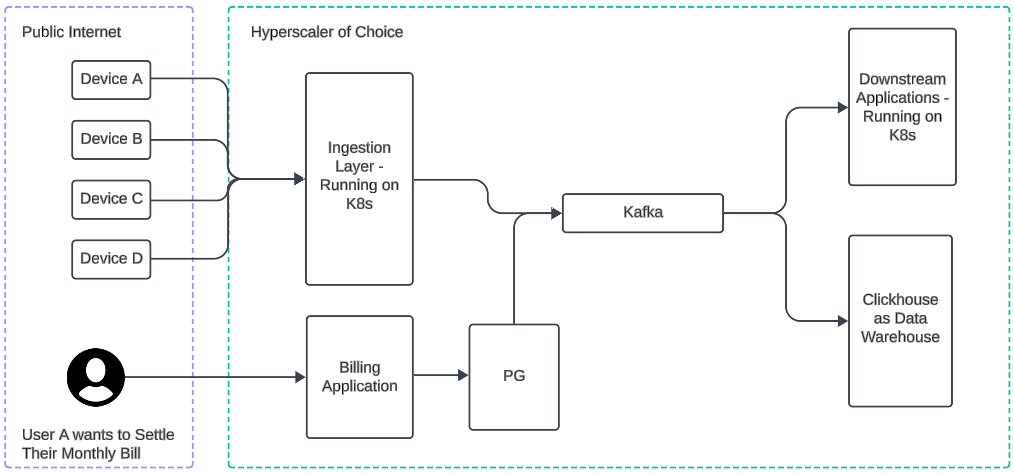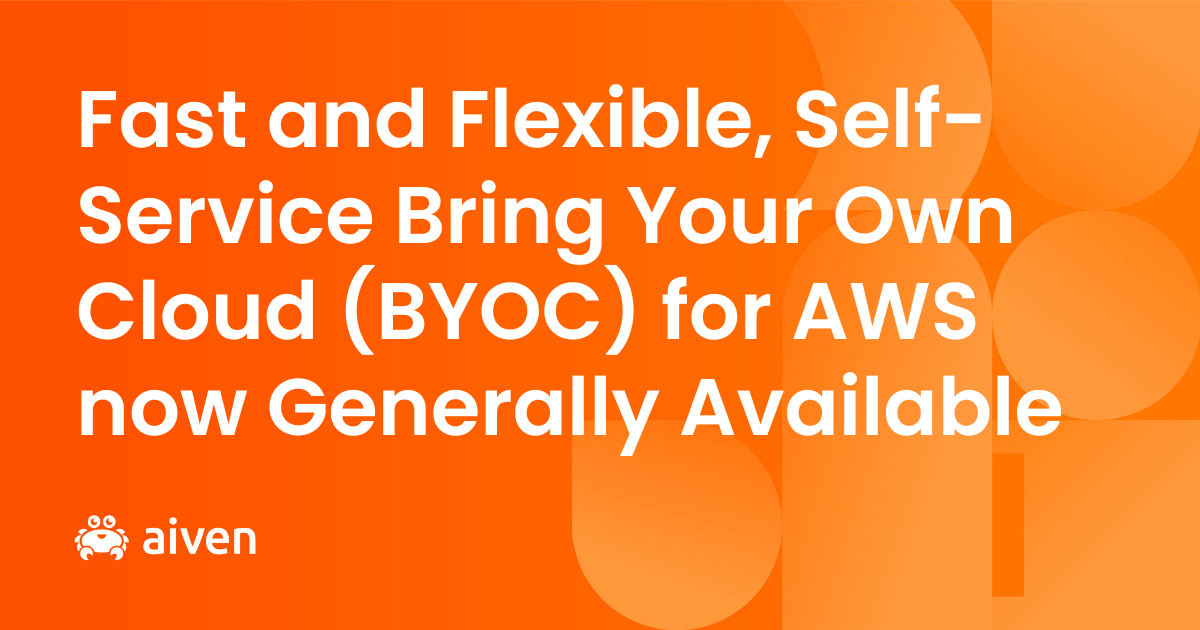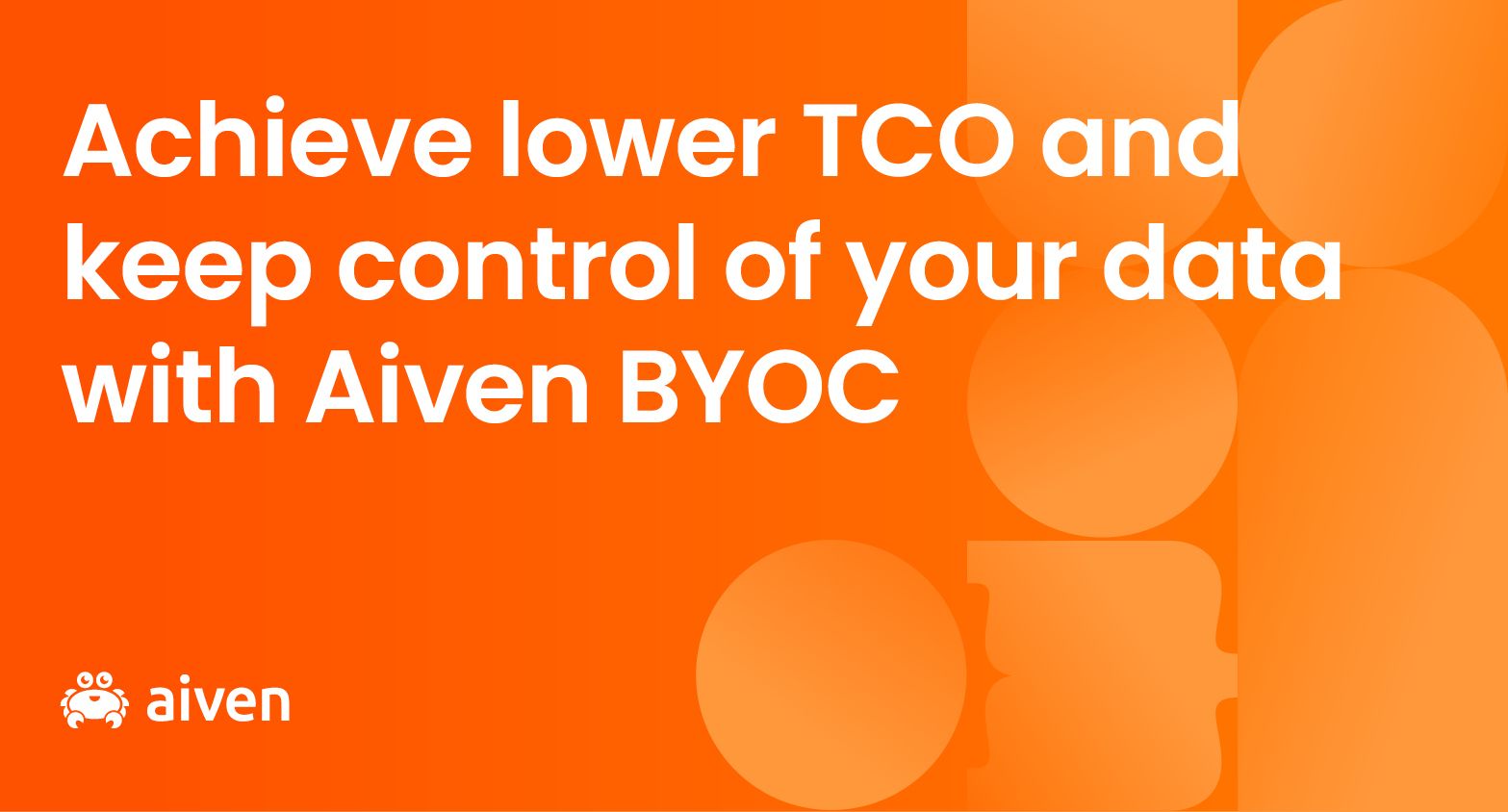Aug 6, 2024
Optimize Your AWS Costs With Bring Your Own Cloud From Aiven
Simplify cost management and drive cost reductions across all in-house and managed cloud services.
Jeremy Heller
|RSS FeedProduct Manager, Platform
Limitations of AWS Pricing Discounts
Are you interested in saving money on AWS services like Amazon Relational Database Service (RDS) or Aurora for PostgreSQL? If the answer is yes, you’re not alone. On-demand database pricing can be quite expensive, and AWS offers only one alternative solution: service-specific Reserved Instances (RIs). RIs are a discounted pricing model where you make a 1 or 3-year commitment for a specific instance type and receive a discounted hourly rate for the service in return. There’s a catch: if you buy RIs for Amazon RDS PostgreSQL, AWS will not apply them to other services like Amazon Aurora, OpenSearch, RDS MySQL, or Elastic Compute Cloud (EC2). Additionally, the AWS Kafka Service, MSK, does not offer RIs, and it is only available on-demand. Once you commit to a RI, you must spend the committed amount. If you need to change the services you use, your existing RI commitments cannot be transferred; they are a sunk cost and must be spent.
Service-specific RIs also do not offer the best cost savings; compute Savings Plans (SPs) provide up to 51% higher savings than RIs and apply to all EC2, Lambda, and Fargate usage. However, SPs cannot be applied to AWS data services, limiting how much you can save. You must also independently manage the RIs for each of your AWS data services, like Amazon OpenSearch, RDS PostgreSQL, and RDS MySQL. This makes minimizing your on-demand pricing across services all the more challenging, adding a significant complexity burden to your FinOps initiatives.
What is BYOC?
So how does Aiven come into the picture? Aiven offers a Bring Your Own Cloud (BYOC) model that allows you to apply your AWS compute SPs to Aiven data services and achieve significant cost savings and flexibility. In the BYOC model, Aiven runs services on standard EC2 instances in your AWS account, meaning your compute SPs will always apply to Aiven services. In this model, your existing AWS Enterprise Discount Program (EDP) also applies to your Aiven services.
With BYOC, you control your data and cost management practices in your own account, while reducing costs by offloading service infrastructure management responsibility to Aiven. Database and streaming services from third parties typically run in the vendor’s cloud environment. This means you can’t apply discounted pricing from a cloud provider to your data and streaming services. BYOC is a fundamentally new model that allows data services from a vendor to be managed and run securely within your cloud environment of choice like AWS, GCP, Azure, or OCI. To learn more about BYOC with Aiven, check out our BYOC documentation.
Aiven vs. AWS Cost Comparison
Imagine you have an application platform that relies heavily on Amazon Elastic Kubernetes Service (EKS) for your compute needs. You stream incoming real-time IoT data with Kafka, which is sent to Clickhouse for data warehousing and to your downstream applications running on EKS. You also use PostgreSQL (PG) databases for application transactions and billing data, which is then streamed through Kafka to downstream applications and your data warehouse. You offer this stack to each of your customers in the following regions: us-east1, eu-west1, and ap-northeast-1.
To maximize engineering resources and reduce costs, you seek fully managed solutions for Clickhouse, Kafka, and PostgreSQL that your application platform can easily consume. You also aim to lower the TCO for your cloud solution, including infrastructure costs. AWS and Aiven both offer managed Kafka and PostgreSQL services, while only Aiven offers a managed Clickhouse solution. How do the compute infrastructure costs compare between Aiven and AWS managed services? Let’s take a look.
For this example, let’s assume you always make 1-year commitments with either SPs and RIs, and all payments occur upfront. Let’s also keep the instance type consistent between Aiven and AWS. Keep in mind that AWS MSK does not offer RI commitments.
| Region | Amazon Kafka (MSK) kafka.m7g.xlarge (on-demand) | Aiven Kafka m7gd.xlarge (1Y compute SP) | Amazon RDS PostgreSQL db.t3.xlarge (1Y RI) | Aiven PostgreSQL t3.xlarge (1Y compute SP) |
|---|---|---|---|---|
| us-east1 (Virginia) | $0.408/hr | $0.1119/hr ($2593.84 YoY savings) | $0.193/hr | $0.112/hr ($709.56 YoY savings) |
| eu-west1 (Ireland) | $0.4548/hr | $0.1289/hr ($2854.88 YoY savings) | $0.199/hr | $0.1394/hr ($522.10 YoY savings) |
| ap-northeast-1 (Tokyo) | $0.527/hr | $0.149/hr ($3311.28 YoY savings) | $0.325/hr | $0.1596/hr ($1448.90 YoY savings) |
When comparing the two approaches, your compute infrastructure cost with Aiven is up to 73% lower than when using AWS native services. With Aiven, you manage only 1 type of savings plan, reducing the effort required to maximize your cloud cost savings on AWS and providing you maximum flexibility. Additionally, any enterprise discounts will apply to the infrastructure costs as well.
AWS does not offer a fully-managed Clickhouse solution for data warehousing, meaning with Aiven, you can invest in driving business value instead of managing Clickhouse. Self-managing services like ClickHouse comes with significant costs beyond the raw cloud infrastructure. You also need to consider the annual cost of manual tasks like performing upgrades, sharding databases, SRE activities, patching, replacing nodes, disaster recovery, service failovers, backups, forking, service health maintenance, and general database maintenance. These tasks can easily add up to 15 hours for an engineer every month.
For organizations looking to optimize costs with robust solutions in their existing AWS environments, Aiven’s BYOC model may be the best approach. If you want to get started with Aiven and BYOC, review our documentation or book a demo! You can also visit the Aiven console to familiarize yourself with all Aiven Platform services.
Stay updated with Aiven
Subscribe for the latest news and insights on open source, Aiven offerings, and more.




